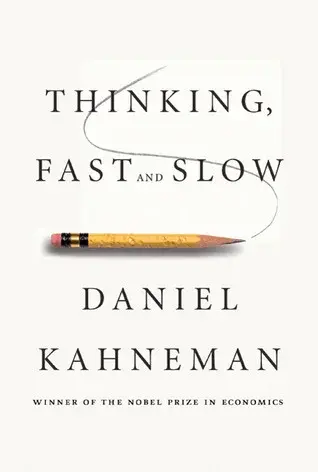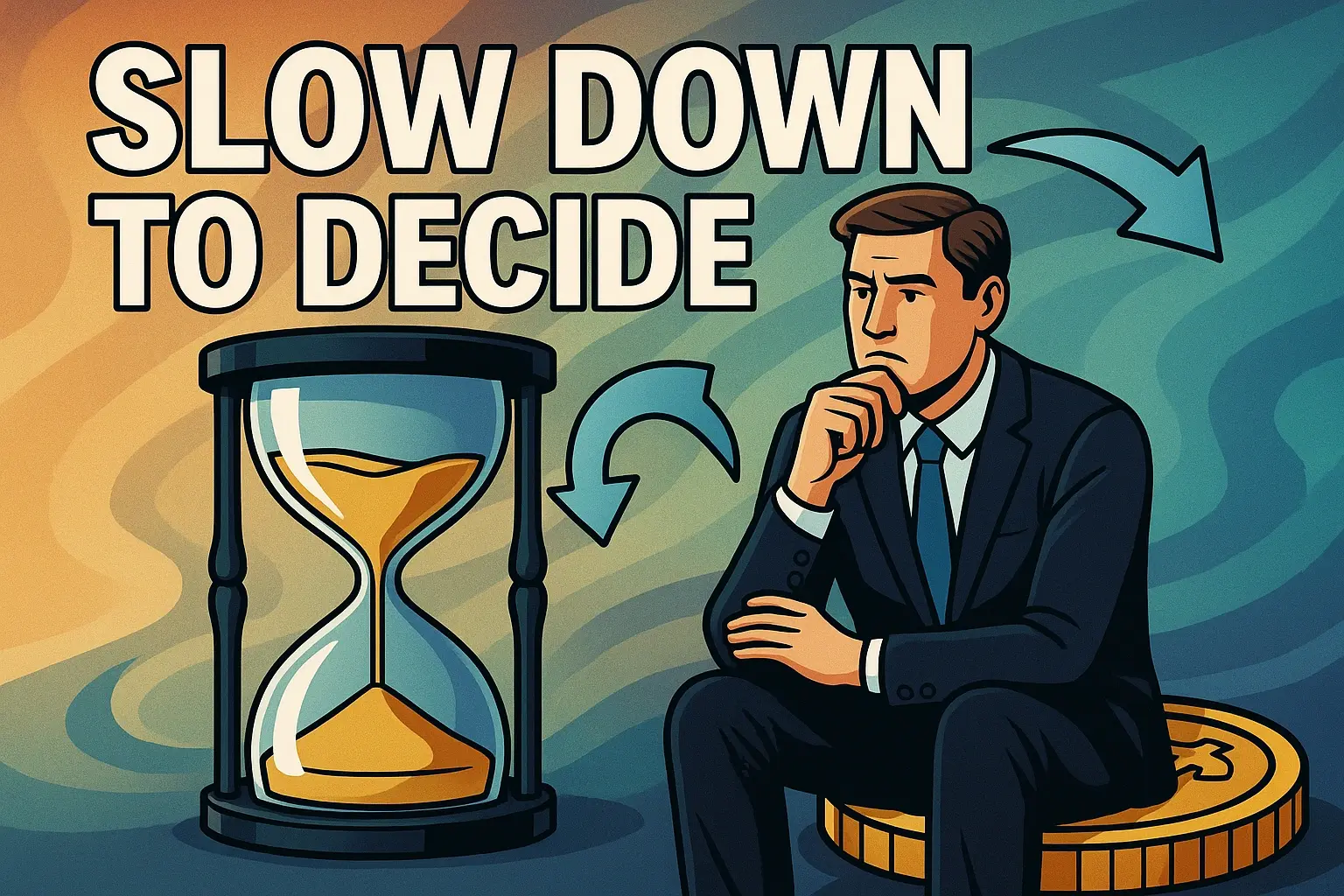
Thinking, Fast and Slow (Essentials)
By Daniel Kahneman
Published October 5, 2025
Daniel Kahneman maps two modes of thought: fast, automatic System 1 and slow, deliberate System 2. Our brains lean on shortcuts that are efficient but error‑ prone—leading to predictable biases in judgment and choice. This summary distills practical tools to reduce noise and bias, improve forecasting, and design environments (and defaults) that nudge better decisions.
Key Lesson
Don’t trust guts alone—design decisions that slow you down where it counts.
Slow Down to Decide
Book Snapshot
ISBN
9780141033570
ASIN
0374275637
Topics & Search Phrases

Full Summary
Thinking, Fast and Slow explains how two systems shape judgment. System 1 runs on patterns, stories, and emotion. It’s fast and useful, but vulnerable to illusions: availability (what’s vivid feels probable), representativeness (surface similarity masquerades as likelihood), anchoring (first numbers pull estimates), and more. System 2 is slower and effortful. It can correct System 1—but only if we notice a problem and have the energy to engage.
Kahneman’s research shows that bias is not a rare bug; it’s the default under uncertainty. We confuse confidence for accuracy, see patterns in noise, and over‑ weight recent or emotionally charged information. The fix isn’t to become purely rational. It’s to install simple guardrails: checklists, reference class forecasting (base rates first, then case specifics), premortems (imagine it failed and list reasons), and decision hygiene (separate judgments before aggregating to reduce “noise”).
The practical thread is design: shape choices so the easy path is the wise path. Use defaults that protect from common errors, present data in absolute risk rather than relative terms, and slow decisions that deserve deliberation. For forecasts, start from outside views; for bets, define exit criteria ahead of time. Bias never disappears, but disciplined process shrinks its footprint where it matters.
See also: Thinking, Fast and Slow (Essentials), The Power of Moments: Why Certain Experiences Have, Influence: The Psychology of Persuasion
Key Takeaways
- System 1 is fast and useful—but predictably biased.
- Use base rates before case specifics (reference class forecasting).
- Counter anchoring with independent estimates, then average.
- Run premortems to surface failure modes early.
- Reduce noise with structured, separate judgments.